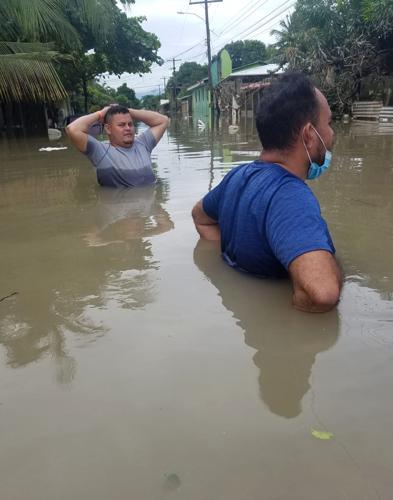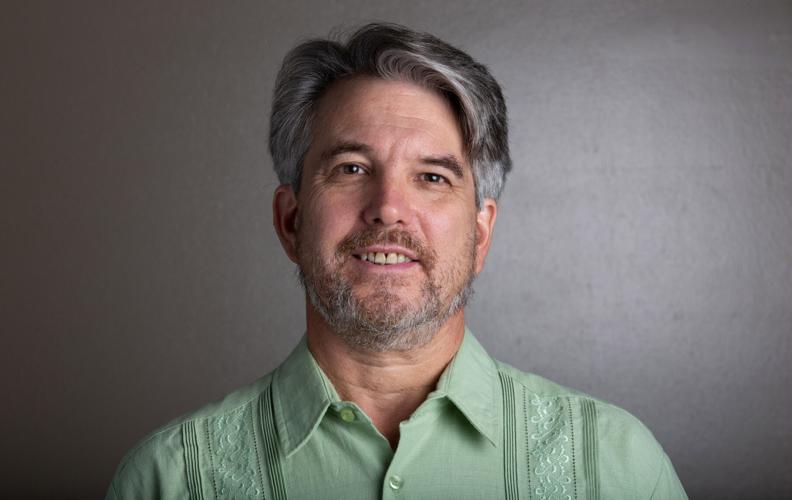NOGALES, Sonora — From a distance, it may seem like things at the U.S.-Mexico border only change in one direction: They get worse.
But that’s not really the case, just an effect of what politicians and news outlets tend to focus on. In reality, all the bad things — the crime, smuggling, corruption — rise and fall.
Migration does, too. And there’s a glimmer of hope now from one of the countries that has sent the most migrants north to the United States in recent years.
Honduras has a new president, ending the 12-year National Party government that became one of the region’s worst examples of narco-dictatorship. I reported in September 2020 how migrants I’ve met across the U.S.-Mexico border and at the Guatemala-Mexico border blamed President Juan Orlando Hernández for forcing them to flee north, even as the U.S. supported his drug-corrupted government.
On Thursday, Xiomara Castro of the left-wing Libre Party took over the presidency. That morning, 2,500 miles north of Tegucigalpa at the San Juan Bosco shelter in Nogales, Sonora, Walter Jerezano was feeling hopeful, at least for those who remain in his home country.
“We hope that with the new president, considering what she has been advocating for and what we believe she will do, the conditions are going to improve,” Jerezano said in Spanish.
He was sitting in the chapel of the hillside shelter, his three children and wife coming and going as migrants from other countries conversed nearby.
“Obviously it’s not going to be from the night to the morning, right?” Jerezano said. “But in the medium-to-long term, along the path that she’s been proposing, we can hope for an improvement, a notable improvement in every way, all the systems.”
Asylum seekers come in waves
Migration from Honduras has risen and fallen sharply in recent years. In 2014, during the Obama administration, thousands of children and teens arrived unaccompanied by parents, overwhelming our system’s ability to care for them. In 2019, when Donald Trump was president, Hondurans families surged north with a similar result.

Tim Steller, Metro columnist for the Arizona Daily Star.
The quiet pandemic year of 2020 was followed by another surge of migration in 2021. Asylum applications by Hondurans rose from 4,084 in fiscal year 2014, the year so many children arrived, to 34,330 in 2020, before falling to 13,614 in the COVID-19 affected year of 2021.
At the Kino Border Initiative, which provides food and services to migrants in Nogales, Sonora, Hondurans have always been a minority, outnumbered by Mexicans especially, executive director Joanna Williams said. But last year there was a disproportionately large increase in Hondurans served.
The numbers went from 597 in 2019 to 351 in 2020, then to 984 in 2021.
From late 2019 to early 2021, one of those recipients was Jose Roberto Tábora, whom I first interviewed at the Kino building near the border in August 2020.
I caught up with him by phone a few weeks ago. He’s living in Austin, Texas, now, working as a kitchen remodeler. His whole 10-member extended family stuck together for more than a year, most of it in Nogales, before getting a chance to enter the country in El Paso as asylum applicants.
Tábora had been a leader of anti-government protests in his hometown, Choloma, and said he fled in part because of a new law vaguely labeling many protests as terrorism, punishable by prison.
Before the Nov. 28 election in Honduras, he noted, some Hondurans were sending family members north for fear of violence associated with the election. Thankfully, that didn’t happen.
Now, he predicted, “migration is going to slow down a lot. So much that there are people I know who’ve entered the United States and now want to return to Honduras.”
New boss’s first goal: Survive
Of course, there is plenty of reason to think that migration won’t slow appreciably. The intractable problems of poverty and violence remain.
Castro, in her inauguration speech, said the country’s poverty rate “in itself explains the caravan of thousands of people, of all ages, that are fleeing toward the north, to Mexico and the United States, seeking a place and a way to surviving without risking their lives.”
The new president faces massive challenges just in keeping her own party together. Before she even took office, a group of Libre party members in the country’s congress allied themselves with the National Party members in an effort to choose the powerful president of the congress.
“Her first goal is not stopping migration,” said Dana Frank, a professor emerita of history at the University of California Santa Cruz and author of “The Long Honduran Night: Resistance, Terror, and the United States in the Aftermath of the Coup.”
“That’s important, but why should we assume that’s her goal? Her first goal is not to be overthrown by the narcos or the military or the Honduran right.”
That’s not an idle risk: Her husband, Manuel Zelaya, was president of Honduras until overthrown by a military coup in 2009, launching the 12 years of National Party rule just ended.
Secondarily, Frank said, if Castro is able to cobble together a coalition in congress, she can start trying to solve the problems that afflict poor Hondurans. Migration could decrease if she succeeds at that, Frank said.
But there is one fairly simple way Castro could help everybody: Reduce the robbing of the national treasury by corrupt officials. She doesn’t have to eliminate corruption. Just ensuring that more public money gets to its intended destinations — salaries of nurses and teachers, social programs — could help a lot.
“It was an incredible sacking,” Tábora said of the last 12 years.
Chain of events can be broken
Migration is often multi-causal, but you don’t have to solve every problem to slow it down. Just interrupting a series of events can reduce the number of people who pick up and go.
In Nogales, Sonora, Jerezano explained that a chain of events led to his family of five fleeing San Pedro Sula. He was working in a textile factory as a machine operator when the pandemic hit, he said. The company laid off part of its workforce, him included. He started working with his brother-in-law, painting cars.
Then Hurricanes Eta and Iota hit his hometown in late 2020. The storms inundated the family’s home, ruining all their belongings. It also upset a delicate criminal balance in the area where they live, he said.

Walter cleans up the family’s home in San Pedro Sula after Hurricanes Eta and Iota struck Honduras in late 2020.
“When the floods happened, the gangsters saw an opportunity to gain territory against their rivals at that time,” he said. “And we happened to live on the border between the two areas. So, since we were on the border, they told us we had to leave our house, which they needed to cross over to the other side.”
His brother-in-law was killed, and Jerezano received a warning he was next, he said.
This border conflict seems like a crazy scenario, but it’s the kind of thing I’ve heard repeatedly interviewing Hondurans over the years. It’s only possible because government officials and criminals have been in league together at all levels, from the very presidency of Honduras, down to the lowest municipal police officer.
The former president’s brother, Tony Hernández, is serving a life sentence in U.S. prison for conspiring to distribute 185 tons of cocaine. U.S. prosecutors showed evidence of then President Hernandez’s involvement in what they called “a violent, state-sponsored drug trafficking conspiracy.”

The flooding in San Pedro Sula after Hurricanes Eta and Iota struck Honduras in late 2020.
The former president has not been indicted or arrested yet, but he was deeply implicated by federal investigators in New York.
“Everything has its roots in the top level of government,” Jerezano said. “Cleaning this up, the effect will work its way downward until it arrives at the people, until it arrives at us.”
That’s the hope, however guarded it may be: If the new Honduran government can reduce repression and start modestly improving life in the neighborhoods, that will have a knock-on effect felt all the way north to Sonora and Arizona.








